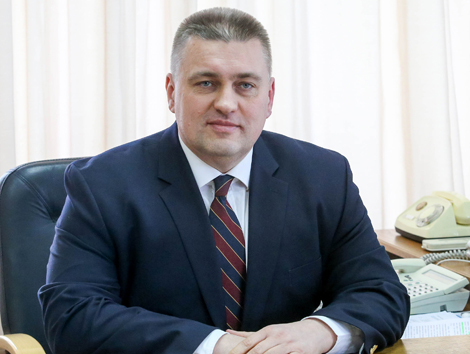Opinions & Interviews
Remembering Nazism victims named part of Belarusian government policy

MINSK, 13 March (BelTA) – Immortalizing the memory of Nazism victims is an inalienable part of the state policy in Belarus. The statement was made by Belarusian Deputy Minister of Foreign Affairs Oleg Kravchenko during the opening of a mobile exhibition in the Belarusian State Museum of History of the Great Patriotic War on 13 March, BelTA has learned. The exhibition was dedicated to the history of the Trostenets death camp.
The Belarusian Deputy Minister of Foreign Affairs said the exhibition had been opened as a tribute to memory of more than 200,000 people, who were ruthlessly murdered by the Nazi in the Trostenets death camp near Minsk. “We have gathered here today to once again remind about these dreadful crimes and to say once again that ideas of Nazism and intolerance have no place on Earth. For Belarus, which lost every third resident during the war, immortalizing the memory of Nazism victims is an inalienable part of the state policy,” said Oleg Kravchenko.
It was underlined that the creation of the Trostenets memorial complex is in the focus of attention of the country’s leadership and President Alexander Lukashenko personally. “The head of state has taken an active part in all the significant stages of the memorial complex’s construction. In 2014 Alexander Lukashenko attended a ceremony to place a capsule with names of the people, who were killed in the death camp. A year later Alexander Lukashenko made a speech during the opening ceremony of the first stage of the memorial,” noted the Belarusian Deputy Minister of Foreign Affairs.
According to Oleg Kravchenko, fates of thousands of residents of Europe were intertwined in the Trostenets death camp. “The exhibition represents a good example of Belarus-Germany cooperation, the joint understanding of the tragic pages of common history,” said the official. He was confident that the opening of the exhibition will give a new impulse to joint efforts of the governments, scientists, and the general public of the two countries to preserve memory about that dreadful war, about all the victims. It will also help prevent similar future tragedies.
The Deputy Minister of Foreign Affairs thanked the German Ministry of Foreign Affairs, the international educational centers in Minsk and Dortmund for the tangible contribution to the creation of the memorial complex and the immortalization of memory of Holocaust victims. “We count on future fruitful cooperation. Joint systemic work to counteract the rebirth of Nazism should remain an important priority on the international agenda,” stressed Oleg Kravchenko.
The mobile exhibition Trostenets Death Camp features archive documents, personal stories and recollections of the prisoners from one of Europe’s largest death camps established by the Nazi in Belarus. Along with historical facts visitors are invited to take a look at how memories about the death camp and the Nazi terror policy in Belarus and European countries evolved. A Belarusian-German group has worked to create the exposition since autumn 2014.
The project has been organized by the international educational centers in Minsk and Dortmund, and the Memorial to the Murdered Jews of Europe Foundation (Berlin). Financial support has been provided by the German Ministry of Foreign Affairs, the Remembrance, Responsibility and Future Foundation (EVZ), and the German War Graves Commission.







 print version
print version make home page
make home page add to bookmarks
add to bookmarks

